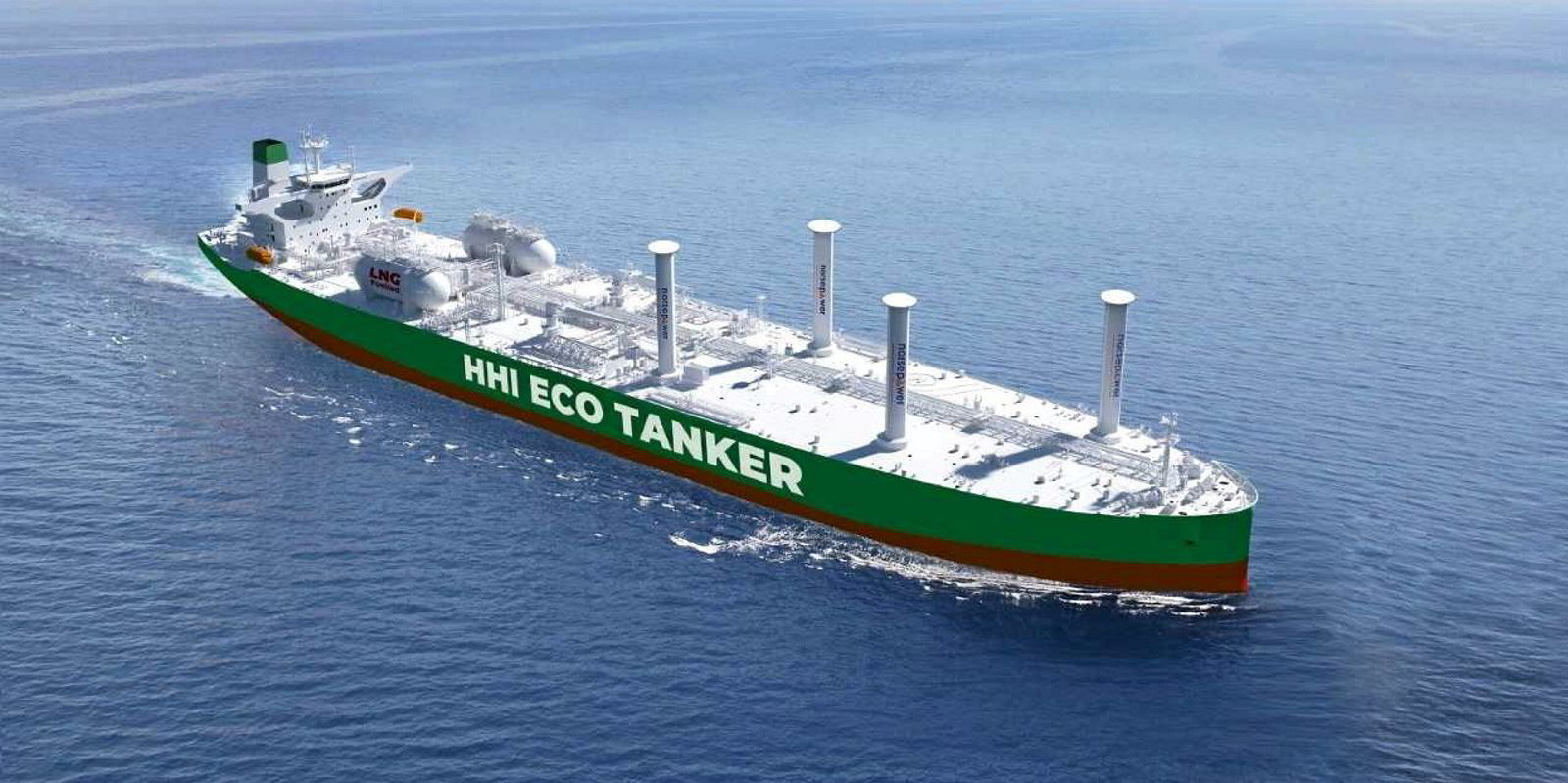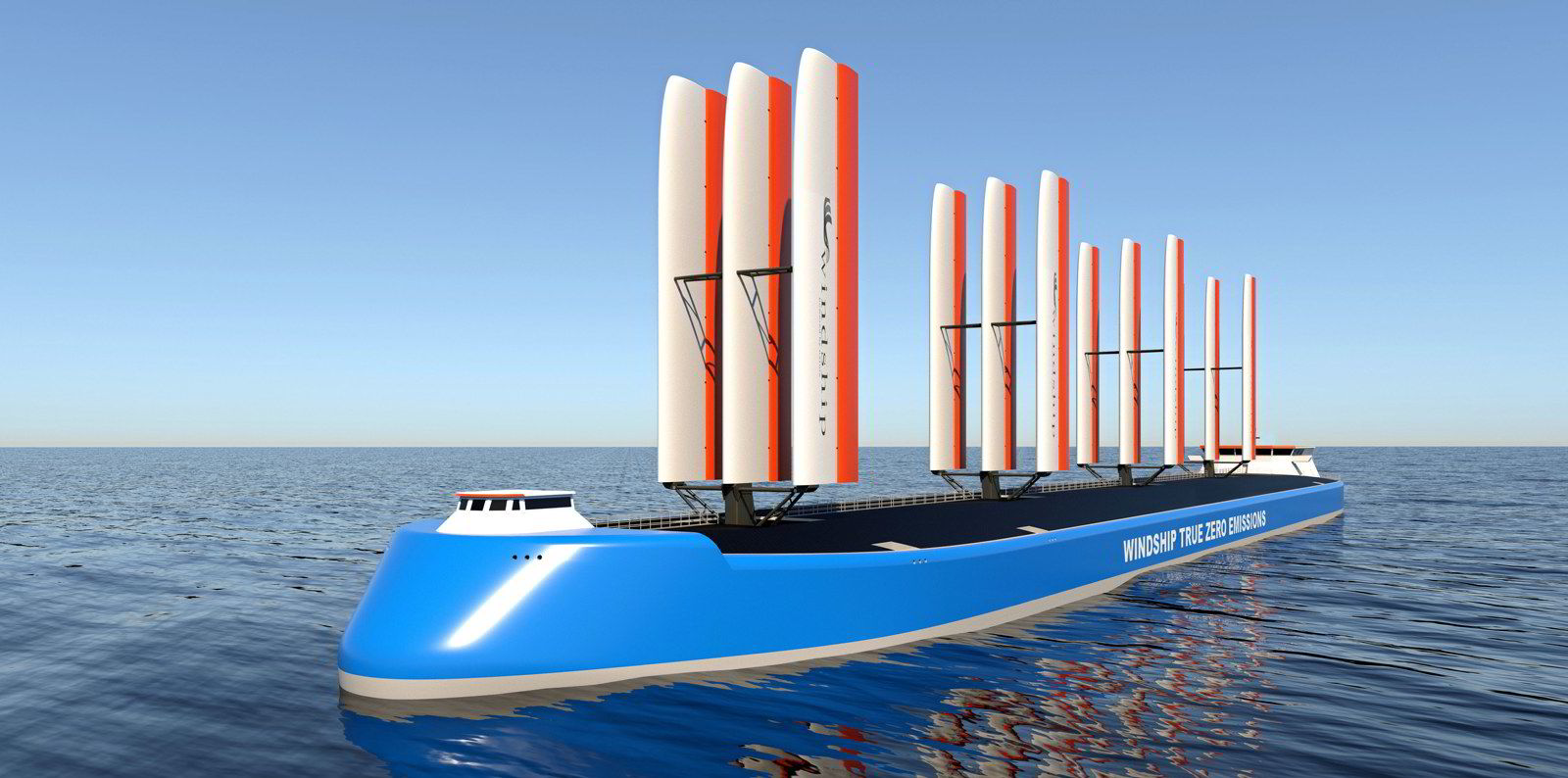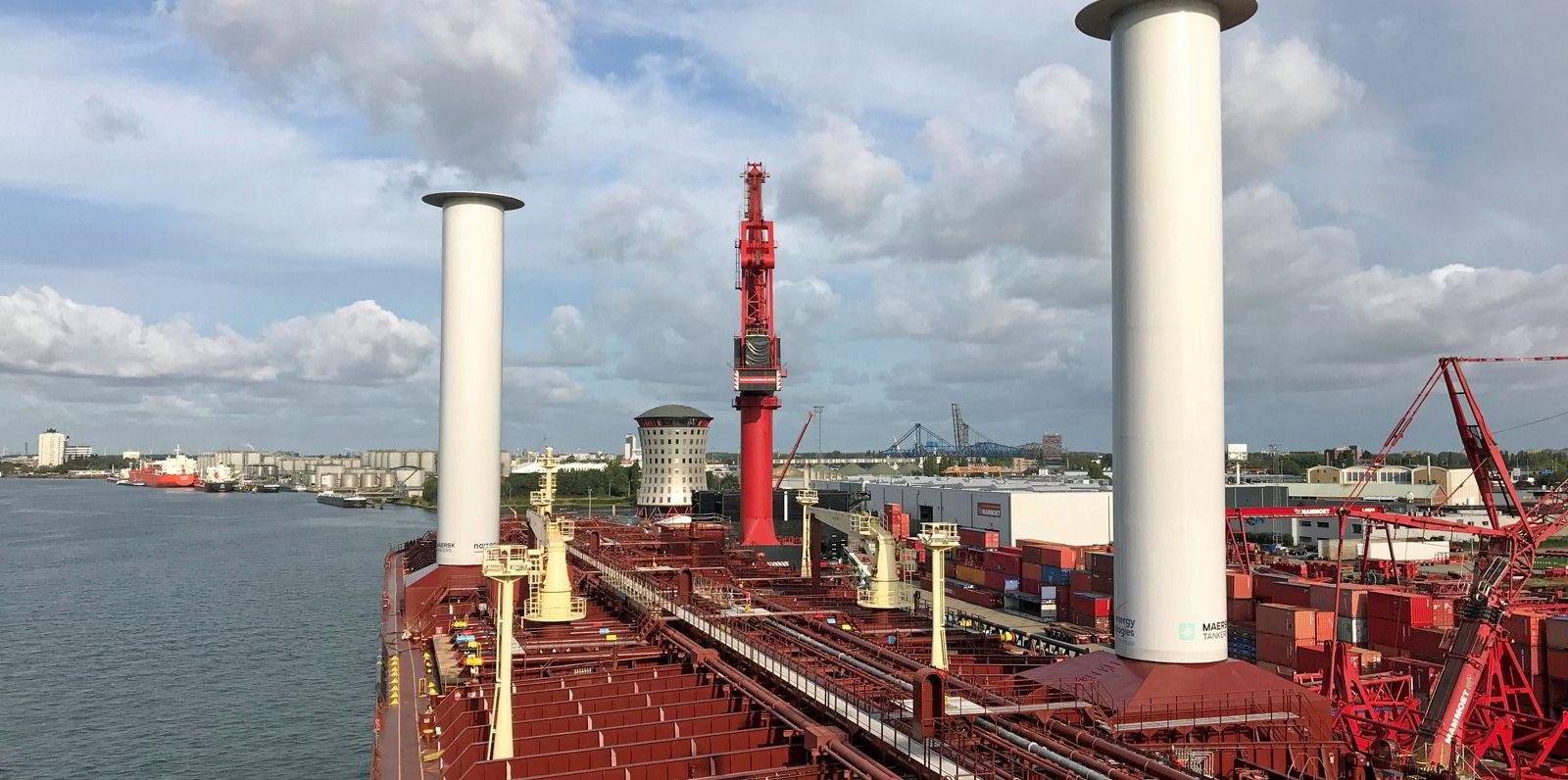Shipping has used the wind as the prime driver to move cargo and passengers since humanity began long-range trading using rafts and wooden vessels. If you think about it, raising the very first sails on any form of vessel was an act of scaling energy efficiency.
And now in the 21st century, we are turning to new forms of high-tech sails to try to increase efficiency as we grapple with the climate crisis.
The sail overcame the limitations of rowing, used to propel the first small craft. While oarsmen may have been strong, they had limited energy density and posed cargo weight carriage limitations, thus presenting an inherent inability for vessels to cover long distances in an efficient way.
The invention of the sail allowed the exploitation of a large natural force present everywhere across the oceans.
Harnessing the wind enabled a reduction of crew, enlargement of ships and improvement of cargo intake and tonne-mile endurance. Ultimately, it enabled the connection of continents, the spread of civilisations and a burst of large commercial transactions, all done in a better, more efficient way.
The use of sail brought other improvements into marine navigation, with inventions such as the compass, astrolabe, quadrant and sextant, allowing sea routes to be opened up with more certainty and accuracy.
Different efficiency problem
However, industrialisation in the 19th century demanded even larger-scale sea transport at faster speeds, and higher cargo weights and volumes posed a new question of efficiency.
The problem was solved by the introduction of mechanical propulsion through a steam engine and a propeller, later replaced by fuel oil and diesel in the 20th century.

Nowadays, a different efficiency problem has arisen: cutting harmful greenhouse gas emissions and replacing fossil fuels with low-carbon alternatives, while continuing to serve growing trade volumes, as economies and populations expand.
The commercial cargo/passenger fleet is designed, built and optimised to achieve commercial efficiency and to meet increasing regulatory demands. Ship benchmarks — dimensions and cargo-carrying capacities — are defined mostly according to the cargo parcels offered by traders, limitations of ports and sailing speed for delivery schedules.
The return of wind power has to be optimised to meet these ship specifications and deck arrangements, by using innovative designs rather than bringing back conventional soft sails.
Compared with the 1920s and the 1980s, when earlier attempts were made to revive wind power, we now have technological tools available that bring tremendous advances. Computing power enables accurate simulations of wind systems' functionality and ship performance; voyage routing weather software tools can be used on board; and advanced software algorithms dramatically reduce sails' operational dependence on the crew.
Mechanical sails
In addition, we are able to use "mechanical sails". These smartly engineered, low-footprint devices offer five to 10 times higher force generation density per square metre of sail surface than conventional rigged soft sails, and can adapt to the optimised deck designs of modern vessels.
The first performance predictions for commercial ships over 20,000 dwt with various wind system arrangements on deck indicate that wind propulsion can contribute a realistic 5% to 20% CO2 reduction per tonne mile, depending on the size of vessel and technical installation.
Those calculations have been done to verify sails' potential contribution to the forthcoming 2023 Energy Efficiency Existing Ship Index (EEXI) standards and to reach Carbon Intensity Indicator operational targets by 2030.
The industry should be encouraged to review the potential of wind propulsion systems for more than 25,000 existing oceangoing ships that will need to meet the EEXI phase-out criteria.
And newbuilding projects should be developed to incorporate sails that can maximise the potential even further, through improving hull form performance and optimising main propulsive power to work in harmony with the prevailing wind systems deployed.
Konstantinos Fakiolas is a senior naval architect and marine engineer specialising in wind propulsion systems. He is the author of the first book on wind propulsion for commercial ships, Wind Propulsion Principles
Do you have an opinion to share? Email: news@tradewindsnews.com







